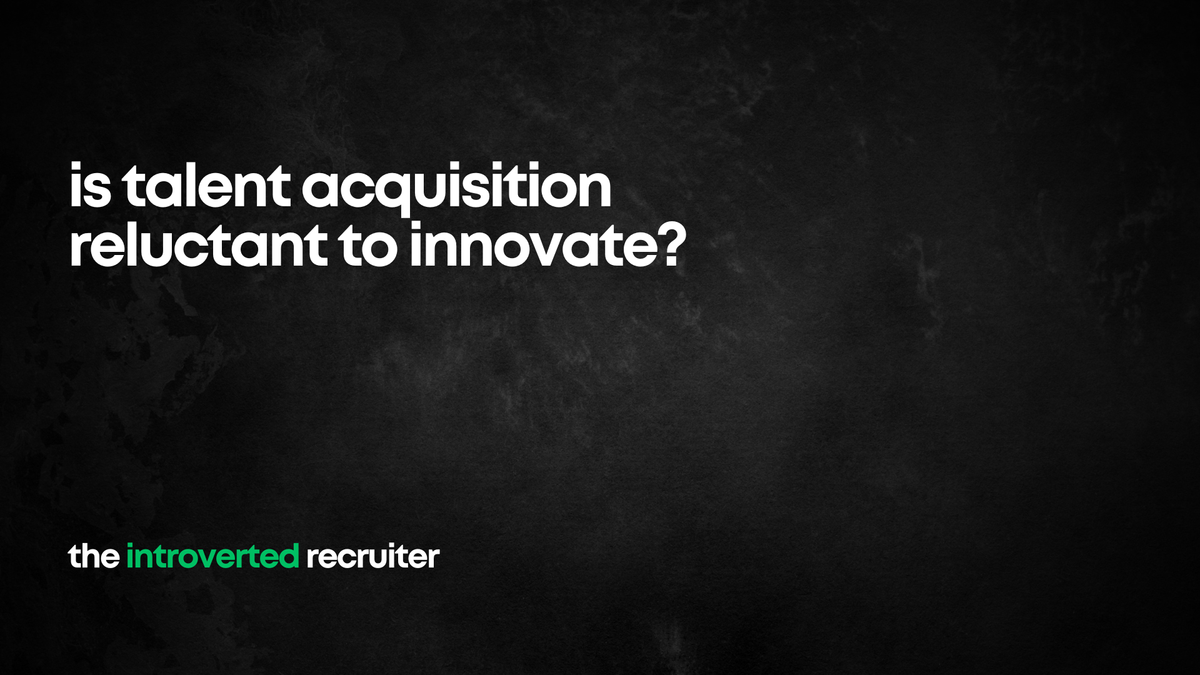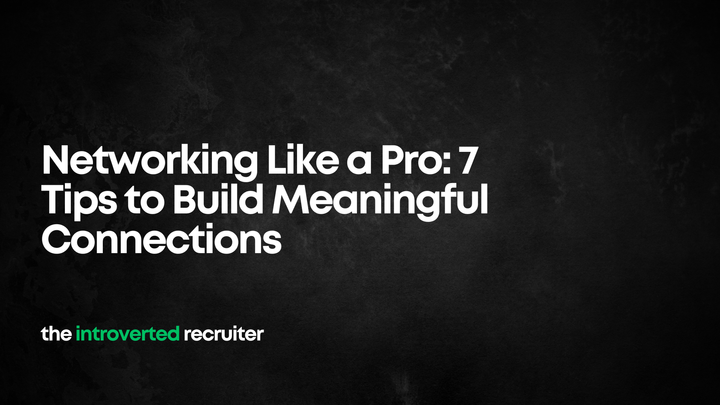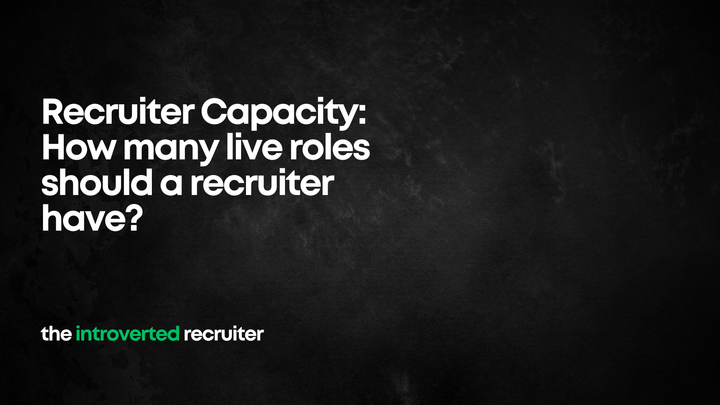Is Talent Acquisition Reluctant to innovate?

Hear me out on this one before you come at me with the pitchforks and torches!
Whilst we can definitely say that TA has come a long way over the past 20 years or so with the invention of new platforms and tools to make TA more efficient at sourcing, better assess candidates, improve candidate experience and promote employer brand, have we really innovated as much as we could or should have at recruiter level?
I posted a poll on LinkedIn, asking how often recruiters are using generative AI, namely ChatGPT.
The poll suggests that 57% of recruiters aren’t really using this tool, a tool that is widely available to them, a tool that is free to use and a tool that has had a lot of publicity on both social media and the mainstream press.
So why haven’t recruiters adopted this new technology in their droves?
There’s a few reasons I can think of:
- They’re not aware of it’s capabilities and how to best use it as a recruiter
- They’ve given it a quick go, didn’t find it useful and didn’t go back to it
- It’s not part of their formal tech stack
- Controversially, we’re mostly doers and not thinkers
In this article I’m going to focus on the last point, not because it’s the most controversial but because I think it’s also the root cause of all the other reasons why this technology isn’t being used in TA as much as it could be.
Most places I’ve worked and most TA teams I’ve interacted with over the years all have similar stories:
“We introduced this new sourcing platform to engage with hard to find talent because LinkedIn is oversaturated and not working for us. The team were really impressed during the demo and we implemented it”
Two weeks later the new sourcing platform isn’t being used by the team, it’s sat gathering technical dust on the technical debt shelf whilst the team are still firing out InMails on LinkedIn.
Another example:
“Building talent communities and pipelines are critical to our success in attracting the talent we need in the future so we’ve invested in the CRM module of our ATS to engage this talent, reduce our time and cost per hire and promote our employer brand”
After the initial influx of candidates being added to the CRM and perhaps a few emails being sent out, it stops.
Candidates are no longer being added to the platform or being engaged with. With every new requisition starts a brand new search from scratch, usually on LinkedIn not from the ATS or CRM.
There are countless other examples similar to these, but you get the idea.
But why is it happening? Are all of these new platforms not fit for purpose? Did they look shiny and brilliant during the demo and sales process but not live up to the hype?
How about a non-tech example?
“We know we need to improve the quality of our job adverts and Inmails to attract the right talent. Let’s bring in an expert to train our teams on how to write engaging job adverts that will attract our target audience”
What happens next is that on the whole, the job advert copy never really changes after the training. A few might change a little bit but on the whole, they’re the same as they always where.
So what’s going on? Here’s my theory.
Most of us started our recruitment careers agency side.
Now this isn’t an agency bash by any stretch, but most agencies don’t encourage you to think, they push you to do.
It’s all about the numbers:
- How many calls did you make?
- How many candidates did you screen?
- How many CVs did you send?
- How many interviews did you book?
- How many placements did you get?
- How much revenue did you generate?
I remember wanting to research a company before calling the manager to do my pitch, but this was during ‘power hour’ and I was promptly asked by my manager why I wasn’t on the phone.
Also I “taking too long” to write a job advert, I should have been on the phone.
Being told not to spend too long sending comprehensive prescreening notes to a client and I just should just write “Joe Bloggs has 5 years C# experience and is available immediately”.
You get the idea, I was encouraged to do rather than to think. I’m pretty sure it was the same for most recruiters.
Luckily, I’m really curious by nature and can sometimes be a bit of a rebel, so the “do don’t think” mentality wasn’t drummed into me, but I can see so easily how it could have been.
So where am I going with this?
Learning how to use a new sourcing platform requires thought, patience and experimentation. Learning and implementing a new CRM requires thought, patience and experimentation.
Learning how to write engaging job adverts requires thought, patience and experimentation.
Learning how to use ChatGPT requires…you got it, thought patience and experimentation.
These things stop us from doing.
Most of us had it drilled into us during the formative parts of our careers that we must be doing, always doing, don’t stop to think, just follow this process and hit these numbers.
Is this why we don’t innovate and try new things as much as we should? Because we’re still chasing the numbers despite our environments changing when we move inhouse?
If I can offer any recruiters some advice it would be this: stop doing for just one hour next week and start thinking and experimenting.
Recruitment leaders, give your teams the space to think and ponder.
Innovation rarely comes from doing things the way they’ve always been done.
Newsletter
Sign up for my free newsletter on SubStack for all the latest content straight into your inbox.
Follow Me
Find me on LinkedIn , TikTok , YouTube or Instagram where I share lot’s of practical no nonsense advice.



